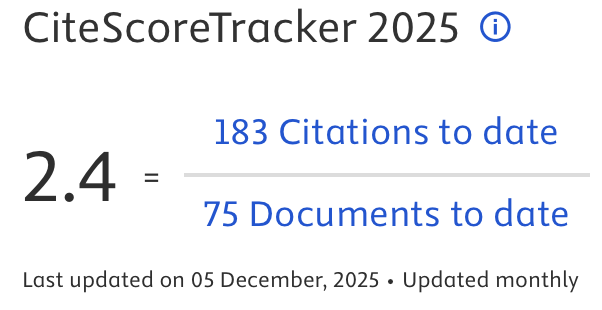Optimasi Kecerdasan Majemuk Sebagai Metode Menghafal Al-Qur’an (Studi atas buku “Metode Ilham: Menghafal al-Qur’an serasa Bermain Game” karya Lukman Hakim dan Ali Khosim)
DOI:
https://doi.org/10.14421/qh.2017.1802-03Abstract
Menghafal al Qur’an merupakan kegiatan yang terkesan sangat berat dan membosankan. Hal ini disebabkan karena metode yang dipakai monoton dan hanya mengaktifkan belahan otak kiri. Berbagai macam metode pun coba diteorikan dan dipraktekkan oleh para h{a>fiz} demi membuat proses tersebut terasa lebih ringan, atau bahkan menyenangkan. Salah satu metode yang belum lama ini ditemukan adalah metode Ilham. Keberadaan metode ini menjadi solusi atas kebuntuan yang dihadapi para penghafal al Qur’an. Metode ini berupaya uuntuk memadukan beberapa metode sehingga proses menghafal tidak membosankan. Metode ini juga berusaha mengaktifkan belahan otak kiri dan otak kanan sekaligus sehingga diharapkan bisa diterapkan kepada penghafal al Qur’an dengan semua tipe belajar.Kata kunci: Tahfidz al Qur’an, Metode Ilham, Kecerdasan Majemuk
 Abstract viewed: 2783 times
|
Abstract viewed: 2783 times
|
 PDF downloaded = 7719 times
PDF downloaded = 7719 times
References
As}baha>ni>, Abu Nu’aim al. al Musnad al Mustakhraj ‘ala> Sahi>h Muslim li Abi> Nu’aim, http://library.islamweb.net/hadith/hadithsearch. php
Atabik, Ahmad. “The Living Qur’an: Potret Budaya Tahfidz al Qur’an di Nusantara”. dalam Jurnal Penelitian. Vol. 8, no. 1, 2014
Bukha>ri>, Muh}ammad bin Isma>il al>. S}ahi>h al Bukha>ri. http://library.islamweb.net/hadith/hadithsearch.php
Fathoni, Ahmad. Kaidah Qira’at Tujuh menurut Thariq al Syathibiyyah. Jakarta: Yayasan Bengkel Metode Maisura, 2016
Gardner, Howard. dkk. Intelligence: Multiple Perspective. USA: Thomson, 1996
Gede, Fithriani. “Implementasi Metode Takrar dalam Pembelajaran Menghafal al Qur’an”. dalam Jurnal Ilmiah Didaktika. vol. 14, no.2
Hafidz, Ahsin W al. Bimbingan Praktis Menghafal al Qur’an. Jakarta: Bina Aksara, 2005
Hakim, Lukman dan Ali Khosim. Metode Ilham: Menghafal al Qur’an serasa Bermain Game. Bandung: Humaniora, 2016
http://jsit-indonesia.com/2017/03/14/sukseskan-munas-4-jsit-indonesia/
http://www.rumahtahfidz.or.id/content.php?ct=berita&idb=1
Jalil, Abdul. “Sejarah Pembelajaran al Qur’an di Masa Nabi Muhammad SAW”. dalam Insania. vol. 18, no. 1, 2013
Jasmine, Julia. Metode Mengajar Multiple Intelligence. terj. Purwanto. Bandung: Nuansa Cendekia, 2012
Khoeron, Moh. “Benang merah Huffadz di Indonesia”. dalam Suhuf: Jurnal Kajian al Qur’an dan Kebudayaan. vo. 4, no. 2, 2011
Muhammad, Ahsin Sakho’. “Menghafal al Qur’an serasa Bermain Game”. dalam Muqaddimah Metode Ilham: Menghafal al Qur’an serasa Bermain Game. Bandung: Humaniora, 2016
Optimasi Kecerdasan Majemuk Sebagai Metode Menghafal Al-Qur’an
Vol. 18, No. 2, Juli 2017 71
Qat}t}an, Manna’ al. Maba>h}is| fi> ‘Ulu>m al Qur’a>n. ttp: Mansyu>ra>t al ‘As}r al H}adi>s|, 1990
Quzwaini>, Abu> Abdulla>h Muh}ammad bin Yazi>d bin Abdulla>h bin Ma>jah al. Sunan Ibn Ma>jah, http://library.islamweb.net/hadith/hadithsearch.php
Shihab, M. Quraish. Tafsir al Misbah: Pesan, Kesan dan Keserasian al Qur’an. vo. 6. Jakarta: Lentera Hati, 2011
Solso, Robert L. dkk. Psikologi Kognitif. terj. Mikael Rahardanto dan Kristianto Batuadji. Jakarta: Erlangga, 2007
Sujiono, Yuliani Nurani dan Bambang Sujiono. Bermain Kreatif Berbasis Kecerdasan Jamak. Jakarta: Indeks, 2010
Suyu>t}i>, Jala>luddi>n ‘Abd al Rah}ma>n bin Abi> Bakr al. al Itqa>n fi> ‘Ulu>m al Qur’a>n. Beirut: Da>r al Kutub al ‘Ilmiyyah, 2012
Zarqa>ni>, Muh}ammad ‘Abd al ‘Az}i>m al. Mana>hil ‘Irfa>n fi> ‘Ulu>m al Qur’a>n. Beirut: Da>r al Kutub al ‘Ilmiah, 2010
Downloads
Published
How to Cite
Issue
Section
License
Publishing your paper with Jurnal Studi Ilmu-ilmu al-Qur'an dan Hadis means that the author or authors retain the copyright in the paper. Jurnal Studi Ilmu-ilmu al-Qur'an dan Hadis uses license CC-BY-NC-ND or an equivalent license as the optimal license for the publication, distribution, use, and reuse of scholarly works. This license permits anyone to copy and redistribute the material in any medium or format and must give appropriate credit, provide a link to the license, and indicate if changes were made. If you remix, translate, transform or build upon the material you may use it for private use only and not for distribution. Jurnal Studi Ilmu-ilmu al-Qur'an dan Hadis granted an exclusive non-commercial reuse license by the author(s), but the author(s) are able to put the paper onto a website, distribute it to colleagues, give it to students, use it in your thesis, etc, so long as the use is not directed at a commercial advantage or toward private monetary gain. The author(s) can reuse the figures and tables and other information contained in their paper published by Jurnal Studi Ilmu-ilmu al-Qur'an dan Hadis in future papers or work without having to ask anyone for permission, provided that the figures, tables, or other information that is included in the new paper or work properly references the published paper as the source of the figures, tables or other information, and the new paper or work is not direct at a private monetary gain or commercial advantage.
Jurnal Studi Ilmu-ilmu al-Qur'an dan Hadis journal Open Acces articles are distrubuted under the Creative Commons Attribution-NonCommercial-NoDerivatives 4.0 International (CC BY-NC-ND 4.0). Article can be read, copy and redistribute the material ini any medium or format under the following conditions:
Attribution — You must give appropriate credit, provide a link to the license, and indicate if changes were made. You may do so in any reasonable manner, but not in any way that suggests the licensor endorses you or your use.
NonCommercial — You may not use the material for commercial purposes.
NoDerivatives — If you remix, transform, or build upon the material, you may not distribute the modified material.









